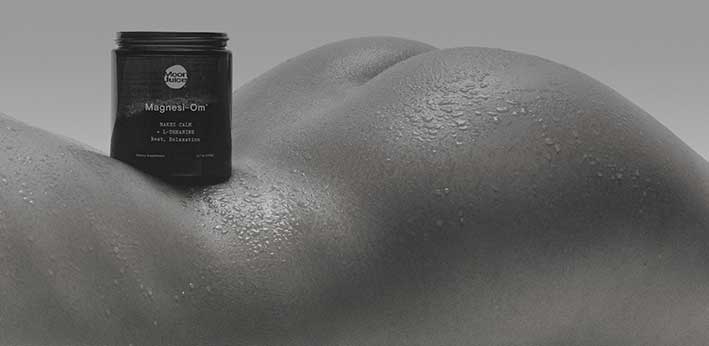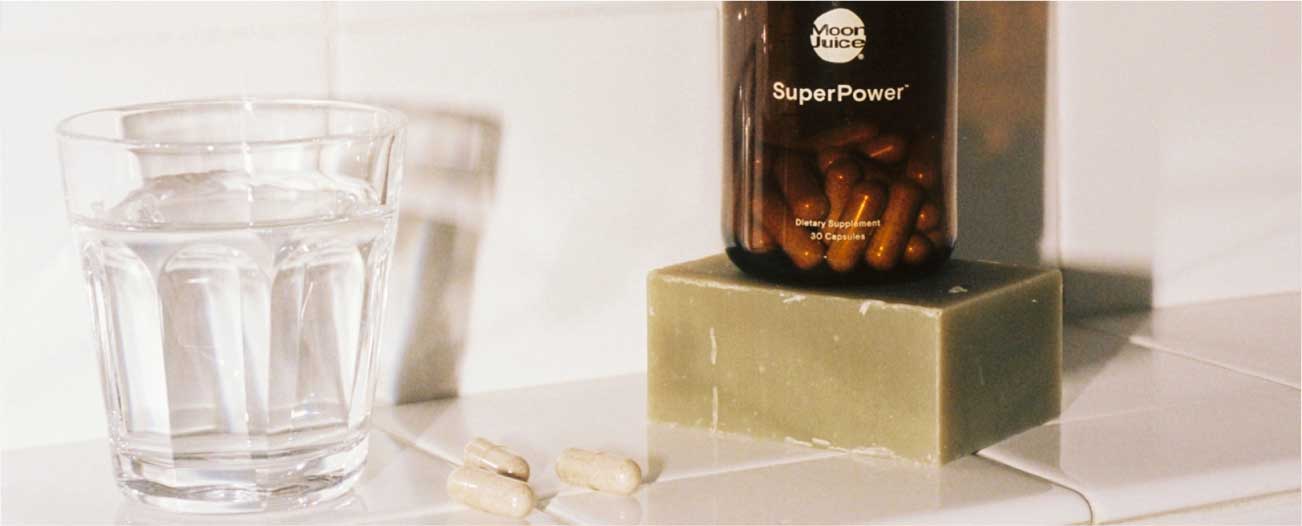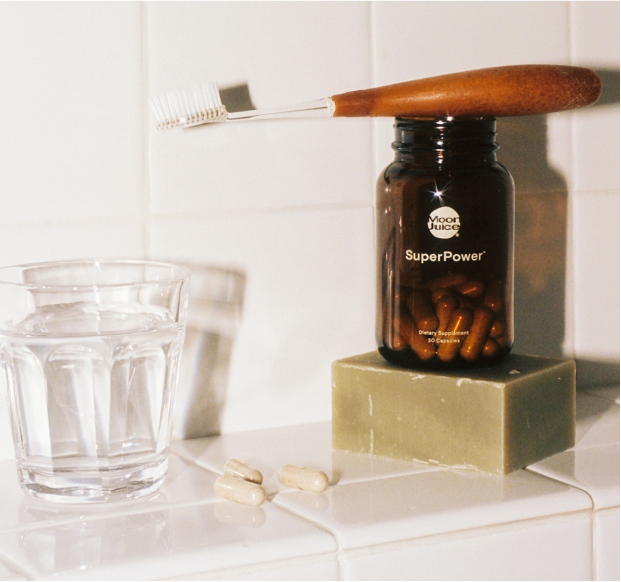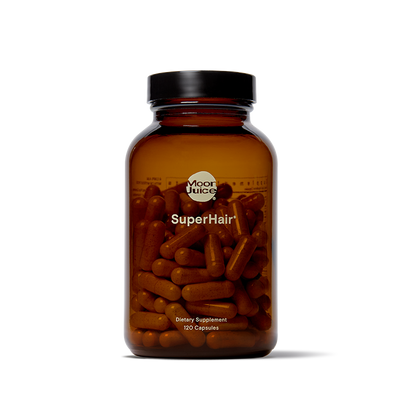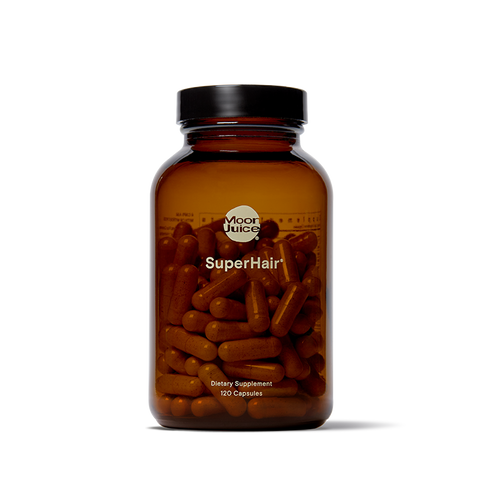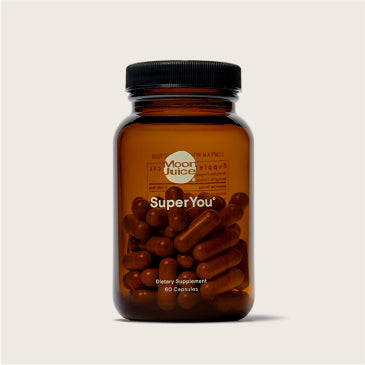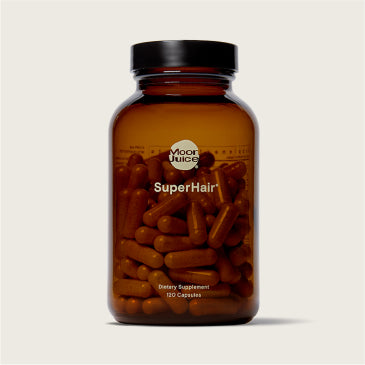Amy Roberts is a Los Angeles-based editorial writer. Her focus is on food, wellness, architecture, and design, and she operates from a place of curiosity, thoughtful communication, and a desire to create meaningful content through a journalistic lens.
Since you were a child, you were likely taught that a cavity is a sign of poor dental hygiene, something that could only be treated by a dentist (and, likely, with some pain involved). Amanda recently spoke to biological dentist Dr. Leedia Riman about the misconceptions surrounding cavities — particularly, that some cavities can be reversed at home. “I think each tooth is magic,” Dr. Riman says. “I treat them like organs, because when there's a disruption in this organ, it indicates that there's a disruption in the body. Each tooth and each mouth tells a lot about a patient physically, psychologically, and emotionally. A lot of it is healable, and it's fixable if you can't heal it.”
So can you reverse a cavity and heal it? According to Dr. Riman, diet and lifestyle changes are the focus. “When most people hear that lifestyle — outside of sugar and brushing — has something to do with cavities, it’s probably very new information,” she says.
Read on for more about how to reverse a cavity, including Dr. Riman’s 6 month plan that includes supplements, lifestyle changes, and creating a strong foundation for better oral health.
What is a Cavity?
First, it’s important to understand what a cavity really is. Just like the name implies, a cavity is a hole in your tooth. It’s caused by tooth decay, which happens slowly over time and erodes the tooth enamel to form a small hole. Things like harmful bacteria, food particles, starches, and sugars all produce acid that begins to wear away at the tooth enamel, eventually leading to a loss of minerals and, later, a cavity.
In conventional dentist practices, a dentist would remove the decayed tissue and fill the cavity with a resin to prevent it from eroding more.
Can you Reverse a Cavity?
Yes, it is possible to reverse certain cavities without all that drilling or filling at a dentist’s office. While it is something you can do at home, you’ll likely need the guidance of a biological dentist like Dr. Riman for guidance.
“The first portion of healing cavities is to find out why you got that dental cavity, or else it's going to reoccur,” Dr. Riman advises.
Here are some her top reasons why you may get a cavity:
-
Mouth breathing. “When you mouth breathe, you remove immunity in your mouth,” Dr. Riman says. “You dry out your mouth and all the salivary support that washes things off your teeth is gone. It provides the perfect environment for the bad bacteria to perpetuate and grow.”
-
Lack of nutrients. “Supplementation and food nutrition is important because you need to make your teeth stronger from the inside for them to be resilient to that acidic fluctuation.”
-
Chronic nasal congestion. “If you don't know whether you can breathe through your nose, you need to visit an airway-centric ENT,” Dr. Riman says. “If you're chronically congested, you need to do 1 of 2 things: nasal rinse with a spray like Ion Sinus, or neti pot.
-
Improper oral hygiene. While many people brush and floss and call it a day, that’s not enough to prevent cavities. “The first pillar of oral health is brushing, flossing, and home hygiene. Home oral hygiene includes nasal hygiene, so you're able to breathe properly through your nose,” Dr. Riman explains. “Baking soda rinses are the only mouthwash that I recommend. I don't recommend any mouthwash because we have to keep thinking about the microbiome. Everyone talks about the gut microbiome, but about 40% to 50% of your gut microbiome is from your mouth, like the harmful bacteria you swallow. It's also being conscientious of tongue scraping, oil pulling, and brushing and flossing properly.”
When Can You Reverse a Cavity?
According to Dr. Riman, you can reverse a small cavity so long as it hasn’t yet reached the inner portion of your tooth.
“We have 3 layers in our teeth,” she says. “The first is the outer enamel, which is what you see when you smile and talk. It's almost a glassy material and is made out of Calcium, Phosphorus, and a ton of other minerals. You can heal a cavity when it's in the enamel area, the outer layer,” Dr. Riman explains. Catching early tooth decay is key to reversing a cavity with success.
What Kind of Cavities Aren’t Reversible?
The longer a cavity is allowed to expand, it may become impossible to reverse it. “Beneath your enamel, you have dentin,” Dr. Riman continues. “When people have slight tooth sensitivity or pain after filling or a crown, it's usually from dentin being upset after the filling. There are lots of nerves in the dentin, but the enamel doesn't have nerves. And the nerves come from pulp, which is in the middle of your tooth, that has your lymph system, nerves, and also blood supply.” When a cavity reaches these sensitive inner portions of the tooth, it’s no longer reversible.
How Do You Reverse a Cavity?
Once your dentist confirms that you have a dental cavity and it’s still in the enamel of the tooth, you can work to start the reversal process — but she says to keep in mind that patience is essential. “It's a process,” Dr. Riman says. “It usually takes about 6 months to a year to reverse the cavity, if it's reversible.” Here are the areas Dr. Riman focuses on when healing a cavity:
Supplements for Tooth Health
Dr. Riman recommends getting serious about your vitamin and mineral intake when you’re healing a cavity to help strengthen your teeth. “Focus on fat soluble Vitamin A, D, and K2,” she urges.
“Anyone who has a cavity, I ask them to focus on Vitamin D3 supplements and Vitamin K2 supplements big time.
We can also get them from our food, like broth and liver maybe twice a week. You need D3 and K2 to uptake the Calcium and transport it to the right portion. If you feel like you can't get it from nutrients, look for all-natural supplements. They make the structure of the teeth so much stronger, so you're more resilient to the acidic fluctuations, tooth sensitivity, cavities, and cortisol spikes in your body.”
More Regular Dental Cleanings
Dr. Riman schedules more regular dental cleanings and check-ups when she’s helping a patient to reverse a cavity. “For 6 months, I see them every 2 months to ozonate that particular cavity and make sure everything is clean and free of dental plaque buildup,” she says.
Ozonated Oils
Dr. Riman recommends that her patients use ozonated oils, like olive oils or coconut oils, which have been shown to promote healing, treat fungal and bacterial infections, and reduce inflammation. She instructs patients to either floss it in (if the cavity is between the teeth) or apply it to the cavity on the tooth.
Lifestyle
“I look at your teeth last when I examine you because that's the easiest to fix,” Dr. Riman says. “Lifestyle is huge.” So what goes into the lifestyle changes involved in fixing a cavity? Things like reducing stress, prioritizing dental health, and scheduling more frequent trips to the dentist during the reversal process. “They can only do that and want to do that if they have a connection with me and they're feeling at ease, with no cortisol spikes and anxiety and the dental phobias that everyone talks about.” Because cortisol causes an imbalance of Calcium and Phosphorus, it’s important to lessen your stress and balance out high cortisol levels when healing a cavity.
Follow-up
After 6 months to 1 year, Dr. Riman takes a final x-ray to determine if the reversal process worked. “If it’s not getting bigger and not indenting, there's no need to touch that cavity,” she says.
Sign Up, Nerd Out
Get wellness tips, education, and recipes
delivered straight to your inbox.
Get wellness tips, education,
and recipes delivered
straight to your inbox.
In Conclusion
It is possible to reverse a cavity, but it takes a bit of teamwork between you and your dentist. “You have to find a dental home,” Dr. Riman advises. “You need to find a dentist you feel comfortable with that is open to cavity reversal, depending on what phase the cavity is in. You need to feel connected to your dentist, safe, and unjudged. You'd be so surprised how much of that leads to the perpetuation of issues, because then people avoid going to the dentist and things get beyond reversible.”
Since you were a child, you were likely taught that a cavity is a sign of poor dental hygiene, something that could only be treated by a dentist (and, likely, with some pain involved). Amanda recently spoke to biological dentist Dr. Leedia Riman about the misconceptions surrounding cavities — particularly, that some cavities can be reversed at home. “I think each tooth is magic,” Dr. Riman says. “I treat them like organs, because when there's a disruption in this organ, it indicates that there's a disruption in the body. Each tooth and each mouth tells a lot about a patient physically, psychologically, and emotionally. A lot of it is healable, and it's fixable if you can't heal it.”
So can you reverse a cavity and heal it? According to Dr. Riman, diet and lifestyle changes are the focus. “When most people hear that lifestyle — outside of sugar and brushing — has something to do with cavities, it’s probably very new information,” she says.
Read on for more about how to reverse a cavity, including Dr. Riman’s 6 month plan that includes supplements, lifestyle changes, and creating a strong foundation for better oral health.
What is a Cavity?
First, it’s important to understand what a cavity really is. Just like the name implies, a cavity is a hole in your tooth. It’s caused by tooth decay, which happens slowly over time and erodes the tooth enamel to form a small hole. Things like harmful bacteria, food particles, starches, and sugars all produce acid that begins to wear away at the tooth enamel, eventually leading to a loss of minerals and, later, a cavity.
In conventional dentist practices, a dentist would remove the decayed tissue and fill the cavity with a resin to prevent it from eroding more.
Can you Reverse a Cavity?
Yes, it is possible to reverse certain cavities without all that drilling or filling at a dentist’s office. While it is something you can do at home, you’ll likely need the guidance of a biological dentist like Dr. Riman for guidance.
“The first portion of healing cavities is to find out why you got that dental cavity, or else it's going to reoccur,” Dr. Riman advises.
Here are some her top reasons why you may get a cavity:
-
Mouth breathing. “When you mouth breathe, you remove immunity in your mouth,” Dr. Riman says. “You dry out your mouth and all the salivary support that washes things off your teeth is gone. It provides the perfect environment for the bad bacteria to perpetuate and grow.”
-
Lack of nutrients. “Supplementation and food nutrition is important because you need to make your teeth stronger from the inside for them to be resilient to that acidic fluctuation.”
-
Chronic nasal congestion. “If you don't know whether you can breathe through your nose, you need to visit an airway-centric ENT,” Dr. Riman says. “If you're chronically congested, you need to do 1 of 2 things: nasal rinse with a spray like Ion Sinus, or neti pot.
-
Improper oral hygiene. While many people brush and floss and call it a day, that’s not enough to prevent cavities. “The first pillar of oral health is brushing, flossing, and home hygiene. Home oral hygiene includes nasal hygiene, so you're able to breathe properly through your nose,” Dr. Riman explains. “Baking soda rinses are the only mouthwash that I recommend. I don't recommend any mouthwash because we have to keep thinking about the microbiome. Everyone talks about the gut microbiome, but about 40% to 50% of your gut microbiome is from your mouth, like the harmful bacteria you swallow. It's also being conscientious of tongue scraping, oil pulling, and brushing and flossing properly.”
When Can You Reverse a Cavity?
According to Dr. Riman, you can reverse a small cavity so long as it hasn’t yet reached the inner portion of your tooth.
“We have 3 layers in our teeth,” she says. “The first is the outer enamel, which is what you see when you smile and talk. It's almost a glassy material and is made out of Calcium, Phosphorus, and a ton of other minerals. You can heal a cavity when it's in the enamel area, the outer layer,” Dr. Riman explains. Catching early tooth decay is key to reversing a cavity with success.
What Kind of Cavities Aren’t Reversible?
The longer a cavity is allowed to expand, it may become impossible to reverse it. “Beneath your enamel, you have dentin,” Dr. Riman continues. “When people have slight tooth sensitivity or pain after filling or a crown, it's usually from dentin being upset after the filling. There are lots of nerves in the dentin, but the enamel doesn't have nerves. And the nerves come from pulp, which is in the middle of your tooth, that has your lymph system, nerves, and also blood supply.” When a cavity reaches these sensitive inner portions of the tooth, it’s no longer reversible.
How Do You Reverse a Cavity?
Once your dentist confirms that you have a dental cavity and it’s still in the enamel of the tooth, you can work to start the reversal process — but she says to keep in mind that patience is essential. “It's a process,” Dr. Riman says. “It usually takes about 6 months to a year to reverse the cavity, if it's reversible.” Here are the areas Dr. Riman focuses on when healing a cavity:
Supplements for Tooth Health
Dr. Riman recommends getting serious about your vitamin and mineral intake when you’re healing a cavity to help strengthen your teeth. “Focus on fat soluble Vitamin A, D, and K2,” she urges.
“Anyone who has a cavity, I ask them to focus on Vitamin D3 supplements and Vitamin K2 supplements big time.
We can also get them from our food, like broth and liver maybe twice a week. You need D3 and K2 to uptake the Calcium and transport it to the right portion. If you feel like you can't get it from nutrients, look for all-natural supplements. They make the structure of the teeth so much stronger, so you're more resilient to the acidic fluctuations, tooth sensitivity, cavities, and cortisol spikes in your body.”
More Regular Dental Cleanings
Dr. Riman schedules more regular dental cleanings and check-ups when she’s helping a patient to reverse a cavity. “For 6 months, I see them every 2 months to ozonate that particular cavity and make sure everything is clean and free of dental plaque buildup,” she says.
Ozonated Oils
Dr. Riman recommends that her patients use ozonated oils, like olive oils or coconut oils, which have been shown to promote healing, treat fungal and bacterial infections, and reduce inflammation. She instructs patients to either floss it in (if the cavity is between the teeth) or apply it to the cavity on the tooth.
Lifestyle
“I look at your teeth last when I examine you because that's the easiest to fix,” Dr. Riman says. “Lifestyle is huge.” So what goes into the lifestyle changes involved in fixing a cavity? Things like reducing stress, prioritizing dental health, and scheduling more frequent trips to the dentist during the reversal process. “They can only do that and want to do that if they have a connection with me and they're feeling at ease, with no cortisol spikes and anxiety and the dental phobias that everyone talks about.” Because cortisol causes an imbalance of Calcium and Phosphorus, it’s important to lessen your stress and balance out high cortisol levels when healing a cavity.
Follow-up
After 6 months to 1 year, Dr. Riman takes a final x-ray to determine if the reversal process worked. “If it’s not getting bigger and not indenting, there's no need to touch that cavity,” she says.
In Conclusion
It is possible to reverse a cavity, but it takes a bit of teamwork between you and your dentist. “You have to find a dental home,” Dr. Riman advises. “You need to find a dentist you feel comfortable with that is open to cavity reversal, depending on what phase the cavity is in. You need to feel connected to your dentist, safe, and unjudged. You'd be so surprised how much of that leads to the perpetuation of issues, because then people avoid going to the dentist and things get beyond reversible.”
